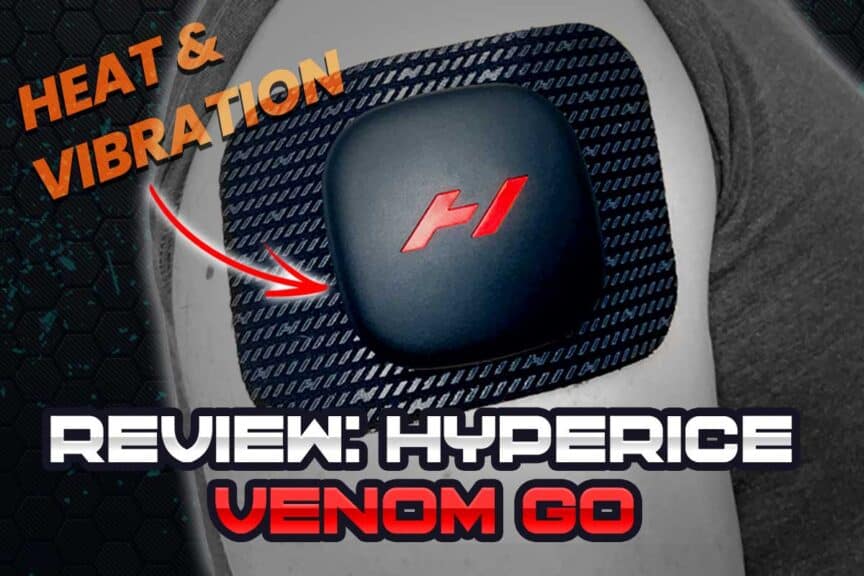There’s no shortage of companies on the market looking to capitalize on ways to sell the general public therapeutic devices. Plenty of devices out there are worth their weight in gold, while others offer unfounded claims and are a complete waste of money.
So, what’s the verdict when it comes to the Venom Go by Hyperice? Can a little device such as this really reduce bodily discomfort through the heat and vibration it offers? This article will give you all the scientific and anecdotal insight as to whether or not this little device is worth your hard-earned money.
Hyperice’s Venom Go packs a surprisingly effective overall punch for its size. It punches above its weight class for its heat output and produces a surprising amount of vibration intensity as well. Its overall cost-to-performance ratio makes it a go-to gadget for annoying aches and pains.
If you want the in-depth findings (along with how to get the most out of this device), check out the sections below, which will unpack additional information that’s certainly worth knowing!
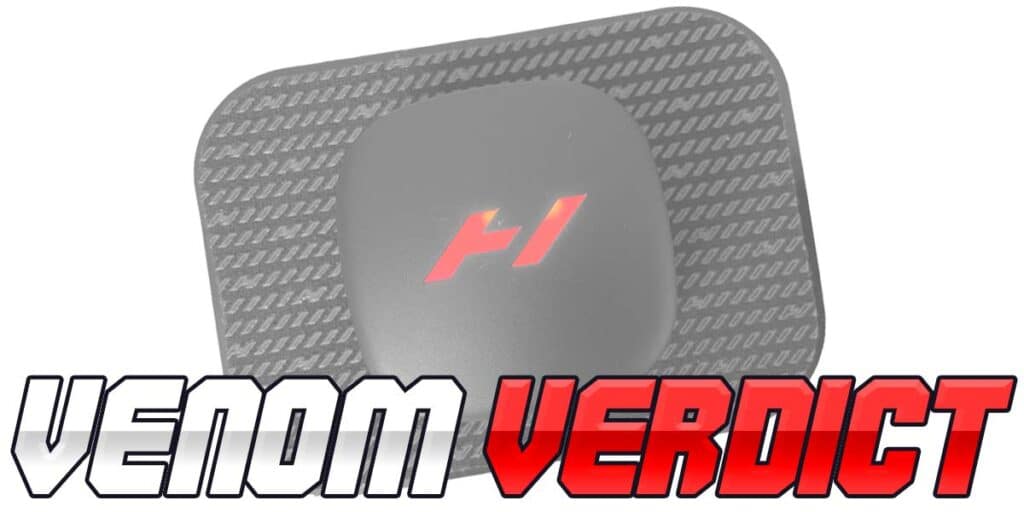
Disclosure: I do not have any affiliation with Hyperice. I have purchased the Venom Go with my own money, and all thoughts and opinions below are my own.
Quick stats on the Venom Go
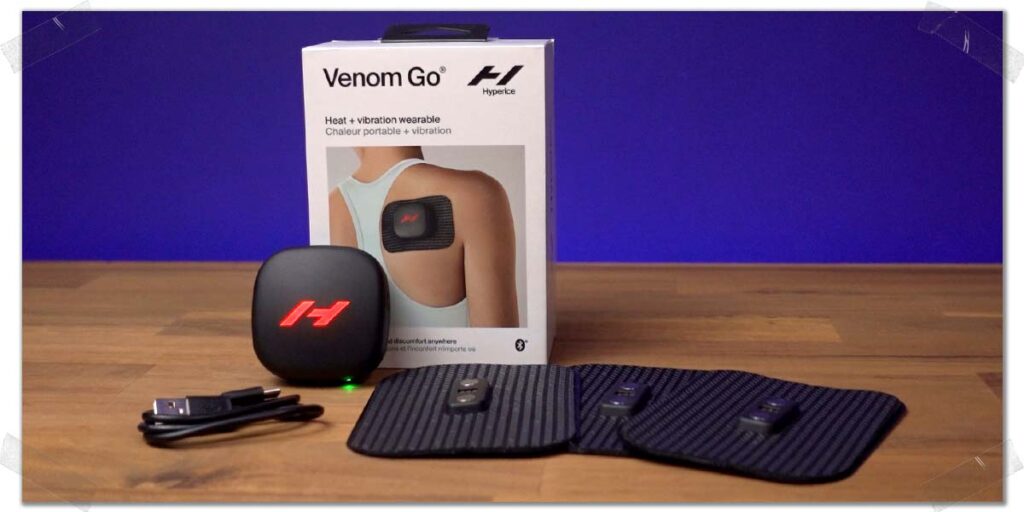
All of the stats below come straight from the instruction manual of the Venom Go, except the pad dimensions, which I measured myself.
Heat Performance: Hot venom
The takeaway: The Venom Go’s heat performance capabilities pack a very surprising punch. I’d pick this device up just for this alone, even if the device didn’t have any built-in vibration abilities.
One of the central features of the Venom Go is its ability to provide therapeutic heat over the targeted area, which can provide pain relief and help promote improved recovery to the tissues beneath the pad.
And this is where this little device massively surprised me (and one of my colleagues who tried it for themselves as well).
Let’s just say that it does not disappoint (read on to find out why).
Heat Output
This is easily my favorite aspect of the Venom Go; not only is the extent of heat output more than adequate, but this thing heats up nearly instantly. I’m being quite literal when I say that. The heat is felt throughout almost all of the pad within two seconds.
There is no lengthy “warming-up” phase or “I think it might be turned on” type of stuff here. Hold the power button down, the device turns on, and as soon as it’s connected to the pad, the warmth is fully felt before you can say, “give me some heat, please.”
Heat coverage
The other pleasant surprise I received with the pod’s heat output is its ability to evenly provide heat throughout the entire pad.
Before giving it a try, I wondered if I would simply feel most of the heat confined directly beneath the pod. To be honest, this is what I was expecting. But once again, I was not disappointed.
The heat from the Venom Go pod evenly travels right up to the borders of the pad. It feels like the last quarter inch perhaps doesn’t get as warm as the rest of the pad, but this could be my own individual perceptive abilities at play.
Regardless, the heat is evenly felt over 95% of the pad (just make sure the edges of the pad are sticking to your skin; otherwise, you’ll miss out on heating those areas).
Vibration Performance: Vibrating Venom
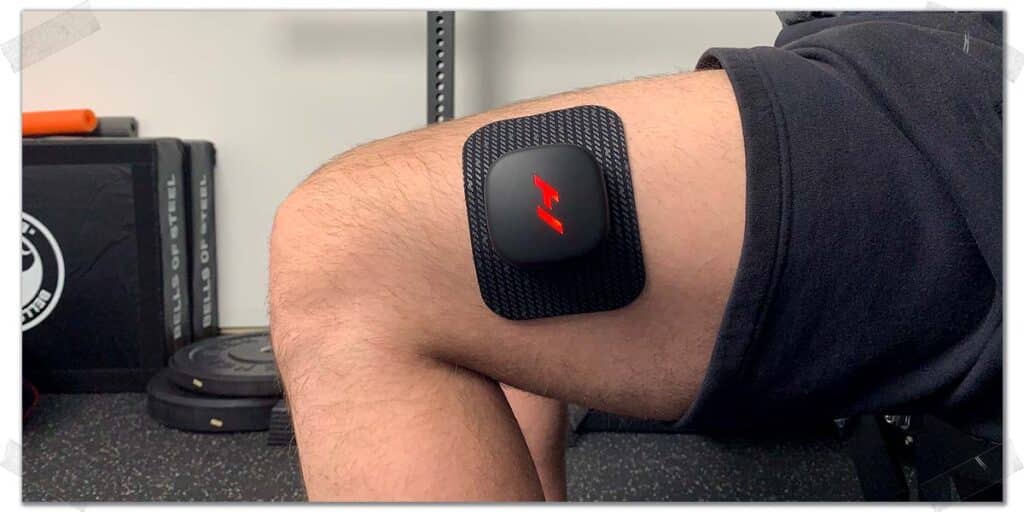
The takeaway: The Venom Go’s vibration abilities stack quite nicely with its therapeutic heat. I wouldn’t buy this device solely for the vibration component, but when combined with heat, it is noticeably pain-relieving.
Vibration therapy involves the process of utilizing vibratory oscillations to produce changes in the neuromuscular system, which can lead to reduced pain, faster recovery, and overall enhanced muscle performance. And it’s got some decent scientific evidence to back it up.
There’s still a lack of scientific consensus for the most ideal parameters to use for getting the most out of vibration therapy, but that’s getting way too far outside the scope of this article.
I’ve written quite an in-depth article on this topic (with a lot of scientific references to go along with it) over on Simplifaster.com. The article will be published within the next few weeks, at which point I’ll provide a link to it.
Still, I’m happy to see that the Venom Go uses a vibration frequency of 88 Hz, as this is well within the frequency range that has been examined for using direct vibration therapy for its neuromuscular effects.
Vibration modes
The Venom Go offers three different vibration modes to choose from. Any of the three modes will likely elicit the same neuromuscular responses, regardless of which one you select, so you can simply pick the one you enjoy the most.
The device certainly outputs notable vibration, which is sure to distract your brain from the pain you’re feeling underneath the pad if nothing else (this phenomenon is known as the gate theory for pain control). As such, it can be an outstanding little gadget to use if you experience nagging issues from exercises such as elbow pain from dips, upper back discomfort after squats, or knee pain from leg extensions.
Overall, I like all three modes of vibration the Venom Go pod offers, as each one feels quite adequate. I find myself switching modes from time to time just to keep things fresh (they say variety is the spice of life, after all).
Keep in mind: Vibration therapy has some scientifically validated therapeutic benefits, but there’s no scientific consensus as to whether continuous or pulsed vibrations are more effective. So, just pick whichever mode you prefer the most and have at it!
Electrode Pads: Some sticky venom
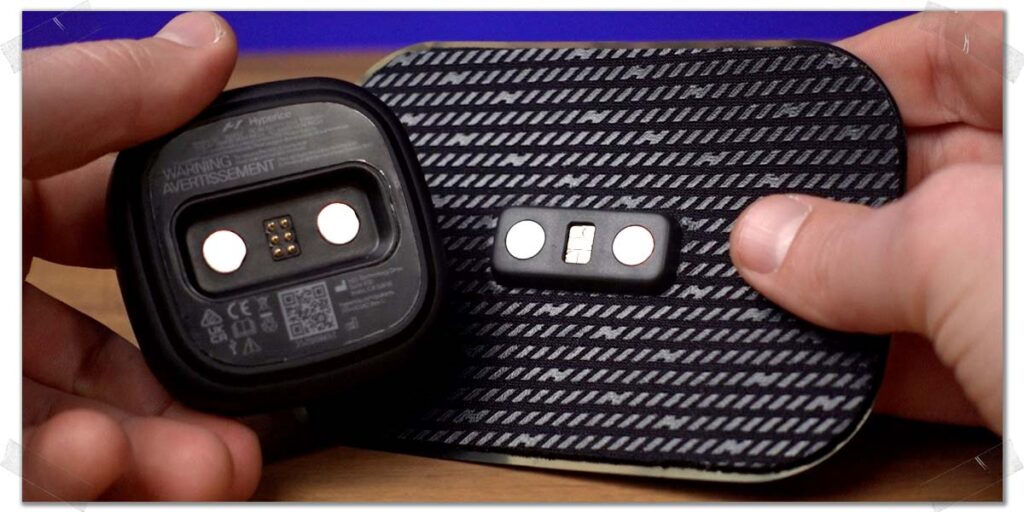
The takeaway: The Venom Go electrode pads allow for even heat distribution throughout the entire pad. They stick very well, though you may have issues with them if you’re not placing them over large, flatter body parts or surfaces.
The Venom Go comes with three electrode pads that Hyperice claims can each be used up to 20 times (these types of pads traditionally lose their stickiness as time goes on).
The pads are extremely sticky, and even after a handful of sessions with the first pad, it’s still sticking to my skin just fine. They are a bit less flexible than a traditional electrode pad, which I would attribute to the metallic weave built into the pad (which allows the heat to travel evenly from the pod throughout the entire pad).
You’ll need to keep this in mind, as the pad might not contour to smaller areas of the body such as the forearm, triceps, Achilles tendon, etc. This will be especially true once the pad begins to lose some of its stickiness. I have suggested an improvement later on in this article for how Hyperice could potentially overcome this issue, which would provide improved versatility and a greater user experience.
Pro tip: Make sure to clean and dry your skin before putting the pad on; this will not only ensure a better stick but will also prolong the life of the pad (since its sticky surface won’t collect as much dirt, dead skin, and other debris).
Battery Life: How much juice in this venom?
The takeaway: Considering the heat output and the size of the Venom Go pod, the battery life is quite adequate. The ability to instantly and magnetically swap a fully drained pod for one that’s fully charged (if you have more than one device) is a unique and very handy feature.
The Venom Go uses a rechargeable lithium polymer battery and is touted to provide an average of 35 minutes of heat at the level III setting. (Keep in mind that the Venom Go has an automatic shut-off timer at 10 minutes, so you’ll have to quickly tap the power button a couple of times if you want to use it for its full battery cycle).
So far, I’m getting almost exactly 35 minutes of use out of the Venom go when using level II heat combined with any of the vibration modes, so I’d say that the battery cycle that Hyperice has stated within their instruction manual is quite accurate.
When using just heat on the level II setting, I’m getting about 50 minutes before the battery is exhausted, which is, again, in keeping with the reported 35 minutes of run time when on the level III setting.
So, considering the size of the pod itself and the surprising heat output it provides, I don’t have any disappointment or concerns with the battery life.
FYI: Hyperice states that the battery charge time on this device is about two hours, which, again, is consistent with what the charge times have been for me as well.
Suggestions for improvement
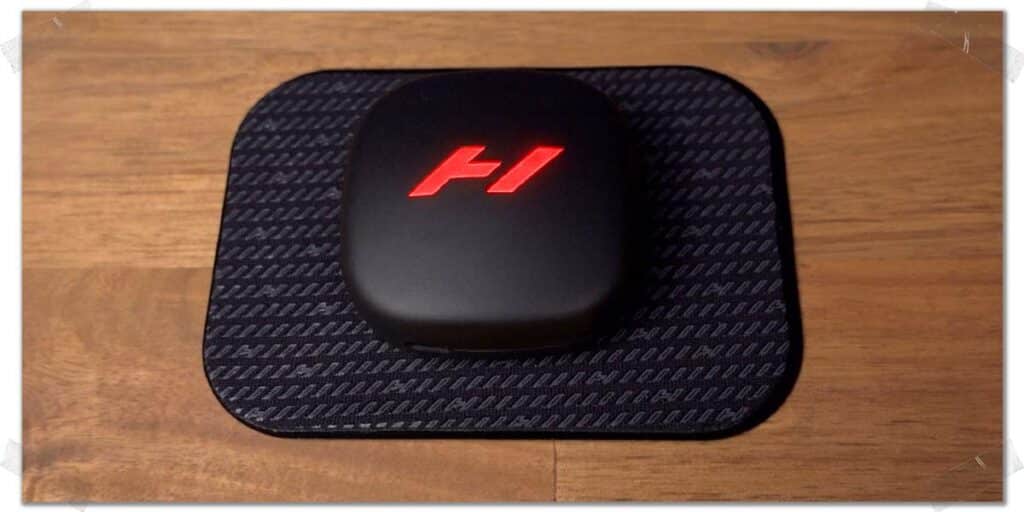
Overall, there’s very little to gripe about when it comes to the Venom Go; its build quality is on point, it produces quite a sufficient amount of heat and vibration, and the fact that you could near instantly swap one battery-exhausted Venom Go for one that’s fully charged while keeping the electrode pad on your skin is an outstanding feature—one that I have yet to see on any other devices.
While I do not have any major “issues” with the Venom Go, there is one thing I’d like to see offered as a means to provide a more versatile user experience:
Variable electrode pad sizes
The included electrode pads that come with the Venom Go are top-notch, and I would imagine their size has been strategically designed to meet the sweet spot of maximizing size while ensuring heat can effectively be delivered throughout.
After all, confining heat to a pad that’s too small can lead to an excessively hot temperature, and a pad that’s too large can disperse heat too much. I get that.
The challenge with the Venom Go’s current electrode pad is that, while perfect for larger areas like the back or general shoulder region, it can be a bit too big for commonly sore areas of the body, like the elbow (such as when dealing with tennis elbow or golfer’s elbow), or even the calf (for those individuals who are more on the slender side).
The more contour an electrode pad must accommodate, the more its edges will continually lift away from the skin. This was the case when using the device on my lateral forearm and even the lower calf.
The proposed solution: I’d like to see the option to purchase (or have one included) an electrode pad that’s perhaps 20-25% slimmer (though the same width would likely suffice). I don’t know if this would equate to too much heat build-up within the pad (though I suspect it wouldn’t), but having the option to use a slimmer pad for different areas of the body would be a welcomed feature for me.
The added versatility of selecting the currently sized pad (for larger, flatter areas) while having an option for selecting a slightly more narrow pad for more contoured areas (forearm, lower calf/Achilles region, etc.) would go a long way in adding user versatility, which would likely be appreciated by users of the Venom Go.
Maybe Hyperice has already looked at this and considered it not feasible (for a reason that would be unbeknownst to me). But I’d love to see them offer a slimmer electrode pad for body parts that have a bit more contour.
Final thoughts
Hyperice is known as an industry leader in therapeutic home therapy devices for their innovation and quality. The Venom Go is merely one more example in a long line of products that are both innovative and built with quality in mind.
Sure, the Venom Go isn’t necessary for getting rid of your aches and pains, but it is a nifty little device that is nice to experience if you’re looking for a rather convenient way to knock down your pain. This is particularly true if you’re an on-the-go individual who doesn’t have the luxury of taking time throughout the day to perform other traditional pain-relieving techniques.
Frequently asked questions
As a means to be as helpful as possible, I’ve included a few frequently asked questions below pertaining the Venom Go. I hope they help!

Hi! I’m Jim Wittstrom, PT, DPT, CSCS, Pn1.
I am a physical therapist who is passionate about all things pertaining to strength & conditioning, human movement, injury prevention and rehabilitation. I created StrengthResurgence.com in order to help others become stronger and healthier. I also love helping aspiring students and therapists fulfill their dreams of becoming successful in school and within their clinical PT practice. Thanks for checking out my site!

